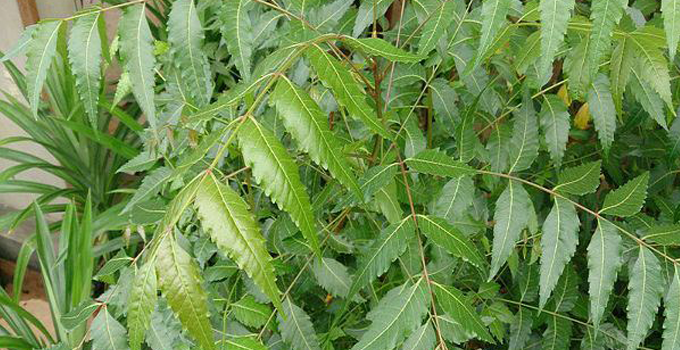
Have you ever come across a lady or a man chewing a stick as a method of brushing his or her teeth. Well this is very common in the villages of India. They ain’t chewing any stick they are chewing Neem (Azadirachta indica A. Juss) sticks.
Neem (Azadirachta indica A. Juss) tree commonly seen and available in India everywhere yet, only a few are aware about neem and know that it is an integral part of Ayurveda for the benefits associated with it. The beneficial properties of Neem (Azadirachta indica A. Juss) have been recognized in the Indian tradition for thousands of years. Each part of the Neem tree has some medicinal property. It is an herb that is commonly available, throughout the year and has benefits that only a few natural products can provide.
Neem is known by many different names, Nimm, Arya Veppu, Azad Dirakht, DogonYaro, Neeb, Nimtree, Vepu, Vempu, Vepa, Bevu, Kohomba, Vembu, Tamar, Paraiso, Antelaea azadirachta, Arishta, Arishtha, Azadirachta indica, Bead Tree, Holy Tree, Huile de Neem, Indian Lilac, Indian Neem, Lilas des Indes, Lilas de Perse, Margosa, Margosa Tree, Margousier, Margousier à Feuilles de Frêne, Margousier d’Inde, Melia azadirachta, Neem Oil, Neem Tree, Melia azadirachta, Nim, Nimb, Nimba, Persian Lilac, Pride of China.
In East Africa it is also known as Muarubaini (in Swahili), which means the tree of the 40, as it is said to treat 40 different diseases.
Neem has anti- bacterial; anti- parasitic, anti- fungal, anti-inflammatory and analgesic properties that not only benefits your health but can help you get rid of common beauty problems that you face in your daily life. All parts of neem are used for preparing many different medicines, especially for skin disease.
Neem leaf is used for leprosy, eye disorders, bloody nose, intestinal worms, stomach upset, loss of appetite, skin ulcers, diseases of the heart and blood vessels (cardiovascular disease), fever, diabetes, gum disease (gingivitis), and liver problems.
The leaf is also used for birth control and to cause abortions. Various parts of the Neem tree have been used as traditional Ayurvedic medicine in India. Neem oil and the bark and leaf extracts have been therapeutically used as folk medicine to control leprosy, intestinal helminthiasis, respiratory disorders, constipation and also as a general health promoter.
Neem which is rich in Vitamin C also helps in getting rid of skin problems like blackheads, pigmentation, dullness and ageing thus leaving the skin with a youthful glow.
Some Ayurvedic use of Neem:
Leaf: Leprosy, eye problem, epistaxis, intestinal worms, anorexia, biliousness, skin ulcers,
Bark: Analgesic, alternative and curative of fever.
Flower: Bile suppression, elimination of intestinal worms and phlegm.
Fruit: Piles, intestinal worms, urinary disorder, epistaxis, phlegm, eye problem, diabetes, wounds and leprosy.
Twig: Cough, asthma, piles, phantom tumour, intestinal worms, spematorrhoea, obstinate urinary disorder, diabetes.
Gum: Scabies, wounds, ulcers, skin diseases.
Seed: Leprosy and intestinal worms.
Oil: Leprosy and intestinal worms.
To throw more light on the importance of having Neem can be seen through this that on the auspicious occasion of Gudi Padwa which is mainly celebrated in Maharashtra as a new year, after the Gudi is worshipped the offering or prasad as they call it in local parlance is made of Neem leaf paste, tamarind, Ajwain, pulses and jaggery is distributed. The Neem leaf paste is said to purify the blood and build immunity against diseases.
A traditional Indian plant medicine has now led to several therapeutically useful preparations and compounds, due to which the scientists are exploring more information about this medicinal plant. After have read all the above information it’s now time to make good use of centuries-old knowledge on Neem through modern approaches of drug development.






